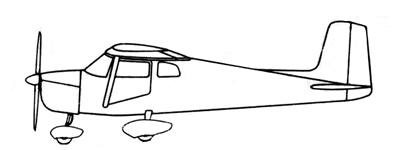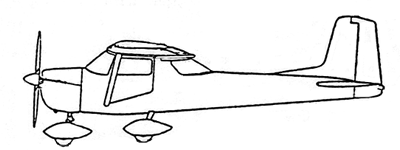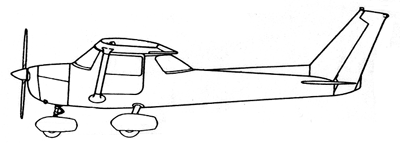Cessna 150 Models
Strictly speaking, in the eyes of the FAA, all Cessna 150s and 152s are derived from, and are essentially the same airplane. Cessna made numerous changes to the airplane over its 27 year history, and like other aircraft manufacturers, they assigned different model designations to most years of production.
Unfortunately, Cessna did not use a logical progression of either serial numbers or model designations. It is difficult to match up model years and serial numbers without a cheat sheet. See Cessna Production Trivia for more information about this than you likely care to know.
There were changes to the airplanes every model year, although many of them were cosmetic. We can divide the model differences into three categories: designation changes, cosmetic changes, and design changes.
FAA "Year" vs Cessna "Year"
Before we start, there could be a difference in the "year" designation of your Cessna 150. The FAA determines the aircraft's "year" for all paperwork and regulation as the year the airplane was built. Cessna on the other hand, used "model year" like your favorite car. For example, if the airplane rolled off the assembly line in November 1973, the FAA says it's a '73, but in Cessna's eyes, it's a '74.
Designation Changes
Over the airplane's 27 year production history there were exactly 31 different model designations.
The first model was simply called the Cessna 150. That model ran from the first airplane in 1959 through model year 1960. Beginning with the 1961 model year letters were added each year, '61 150A, '62 150B, '63 150C, '64 150D, '65 150E, '66 150F, '67 150G, and '68 150H.
In 1969 Cessna skipped a letter, there is no "150I," the 1969 airplane is the 150J. They continued on with 150K in 1970, then used 150L from 1971 through 1974, and 150M 1975 through 1977.
In 1970 Cessna introduced the 150 Aerobat, and designated these models with a leading "A", with the remainder the same as each model's designation, A150K, A150L, A150M.
Starting in 1966 Cessna began assembly and manufacturing in France, for the most part these airplanes were the same models as in the US, but French built models lead with an "F", F150F, F150G, F150H, F150J, F150K, F150L, F150M. French Aerobats were designated FA150 and the model letter. One model unique to France was the 130 HP Rolls Royce/Continental equipped Aerobat, which was designated the FRA150L, and FRA150M. The list is rounded out by two 1972-1973 models manufactured in France but assembled in Argentina (a total of 47 airplanes) These were called the A-150L and A-A150L.
When Cessna introduced the 152, they stopped re-designating models by year. There are only 4 designations for all 8 model years of 152s (1978 - 1985). They are 152, A152 for the Aerobat, and F152 and FA152 for the airplanes built in France.
Cosmetic Changes
The paint schemes and interior appointments of the airplanes were changed every model year. Like Car makers, Cessna offered standard and deluxe models, and even special editions. Upgraded models were called "Commuters" and upgraded 152's were designated 152II's. Special editions were offered that promoted flying, included the "Discover Flying" model (popularly known as HoJo because it used 1970's era Howard Johnson's colors), and the 1977 patriotic themed "TakeOff" models. Airplanes built in France or exported had different paint schemes as well. All told there was a bewildering array of more than 60 different paint schemes. The Cessna 150-152 club has been gathering data on the original colors, layouts and model choices for several years now. We expect to eventually have a complete set of paint scheme drawings available here on the website.
Design Changes
Though there were dozens of individual design changes model year by model year, some operational, others cosmetic, (members can see an exact list of year by year changes.) there were only three instantly recognizable visual design changes.
| 1959-1963 Profile (fastback straight tail ) Between 1959 and 1963 the airplanes had a fastback fuselage and a straight upright tail like other Cessna's of the era. These are considered the "Classic" Cessna 150's |
| 1964-1965 Profile (Omnivision straight tail ) In 1964 Cessna introduced a rear wrap around window, and called it "Omnivision". 1964 and 1965 airplanes have Omnivision, but kept the straight tail. |
| 1966-1985 Profile (Omnivision slant tail ) In 1966 Cessna redesigned the tail to sweep back, giving the airplane a "going fast while standing still" look. All Cessna 150's from 1966 on kept this same basic look. |


